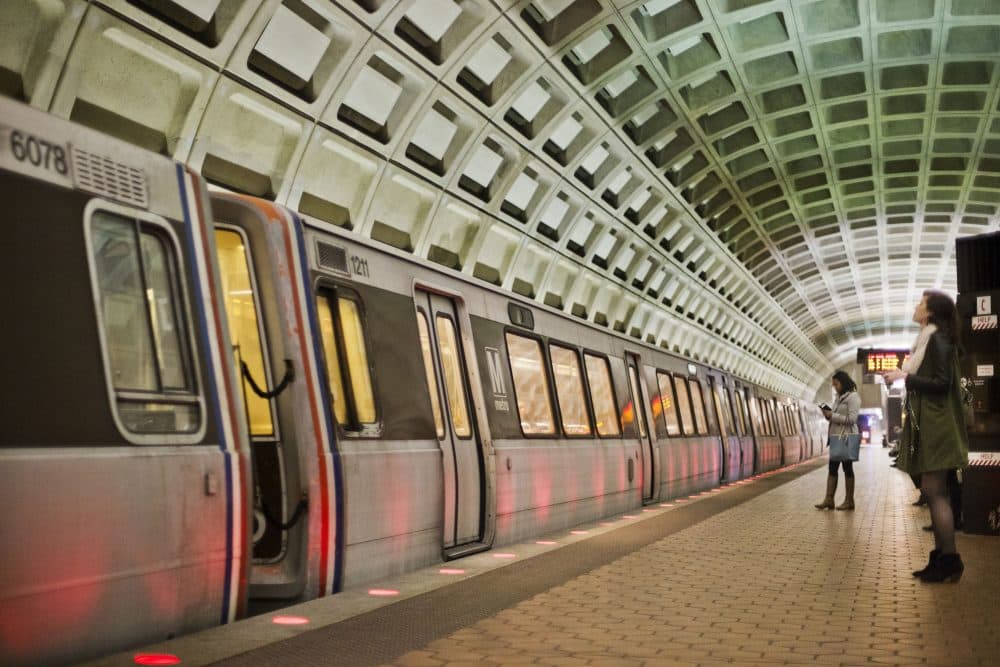Advertisement
Why Public Transit Ridership Is Down In Most U.S. Cities
Resume
In all but a handful of cities, public transit ridership was down in 2016. New York, Los Angeles, Chicago, Austin and Washington, D.C., to name a few, all saw decreases in the number of people taking public transit.
Here & Now's Jeremy Hobson talks with Jon Orcutt (@jonorcutt), the director of communications and advocacy at TransitCenter in New York, about what's causing the drop in ridership and what some cities are doing to attract more riders.
Interview Highlights
On whether Uber and Lyft are to blame for decreased public transit ridership
"The evidence is scant, because Uber and Lyft don't provide a lot of data to the public sector. We are getting more of that information here in New York, and a study by a former colleague of mine in city government has just found that yes, Uber and related services are seeing very steep inclines in the number of cars and trips that they're making, at a time when the city is still growing but transit ridership is kind of flattening out."
On other reasons why transit ridership is going down
"Cheap gas in places where there is a real choice between still driving and taking transit... but, again, because you really have to look at what's happening in each of the major metro regions. Rail ridership would actually be up in the United States from 2015 to 2016, but for the cratering of the Washington, D.C. Metro system, which saw a 14 percent reduction in riders last year because of the corrosion, the neglect, the very long-term problems that had finally come home to roost in Washington, D.C. ... People are fleeing the system as service has become really unreliable, and lots of emergency repair work is creating havoc with the schedule."
On the reliability of some of the nation's biggest transit systems
"In New York City subways, for example, it's really a case of, it's so crowded no one goes there anymore. The system, unlike Washington — which is suffering from disinvestment, policy neglect — New York is succeeding to the point where they can't catch up with the demand. But since you mentioned London, there's a very interesting divergence, which is, in New York, bus ridership has been going down for a decade or more, while subway ridership climbs steeply. In London, both transit ridership on all systems is going up. And the difference is that London has paid a lot of policy attention to its buses — it's moving buses through traffic in bus lanes, it's sorting out to board faster, and in New York, those things are neglected, and buses have become a real stepchild of the [Metropolitan Transportation Authority]."
On how to change the culture to focus on public transit
"Well the places that are doing well are places where, not only do you have a very alert and innovative transit agency — and you could name Seattle, Houston, San Francisco among those — but you also have city government at the table demanding better service, partnering with the agencies on street policies like bus lanes, like traffic signals that communicate with the buses. You can't look at rail and bus as two different things. You need to look at them together, and that's why Seattle is the best, fastest-growing transit city in the country right now. As they add new segments of rail, they reorganize the bus system so that frequent buses are running across the rail lines, and people use both as a seamless network."
This article was originally published on March 21, 2017.
This segment aired on March 21, 2017.